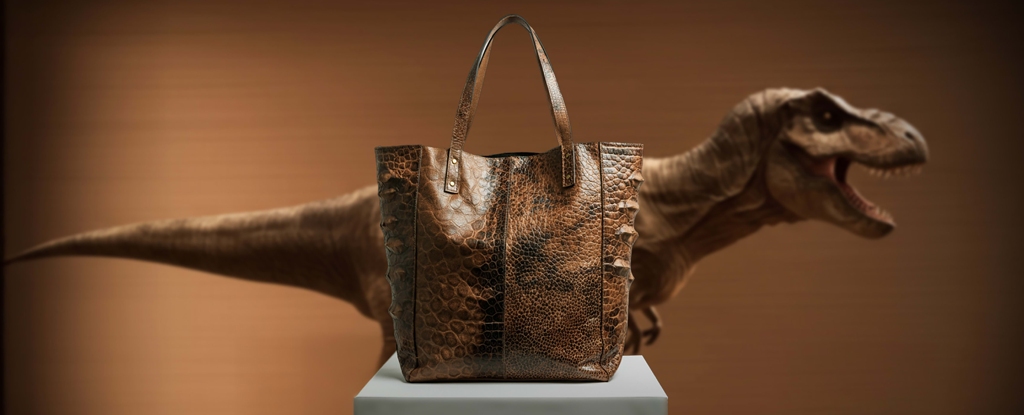World's First 'T. Rex Leather' Is Claimed to Come From Dino DNA. Is This For Real?

A team of biotech startups want to create lab-grown leather based on fossil remnants of the king of dinosaurs, Tyrannosaurus rex. This ambitious project is a collaboration between The Organoid Company, a Netherlands-based genomic engineering startup; UK-based Lab-Grown Leather, a business specializing in 'scaffold-free' biomaterials; and VML, a US marketing agency responsible for the 'mammoth meatball'. This trio of businesses considers lab-grown leather a "more sustainable and ethical future for the luxury materials industry", according to a press release from VML, by avoiding the animal death, deforestation, and chemicals involved in traditional leather manufacturing processes. They hope the T. rex leather in particular will offer the "natural durability, repairability, and the tactility expected in high-end leather goods." But in their announcement – which is all we have to go off, at present – the companies also claim the new material will be "engineered using T. rex DNA", which scientists have yet to extract from any dinosaur fossil. Even within the most well-preserved specimens, DNA doesn't seem to survive much more than a million years or so before it becomes too fragmented and degraded to be sequenced. The oldest DNA fragments on record, extracted from Siberian mammoth molars, are around 1.6 million years old. T. rex went extinct 66 million years ago, so there's no hope of ever recovering its DNA. What the team will actually refer to as a blueprint for this lab-grown leather is fossilized T. rex collagen, and even that has a questionable grounding. Collagen, the most abundant protein in vertebrate bodies, is an important component of all leather, bundled into fibers that give the material its defining features. Type 1 collagen is found throughout vertebrate bodies, from the skin surface to the living core of bone. Soft tissues like these rarely survive the ravages of decomposition and are rare in fossils. A 2007 study claimed to have sequenced seven short peptide fragments of type 1 collagen from a T. rex fossil. However, skeptics later argued the authors mistakenly sequenced ostrich and alligator collagen lurking in the equipment. Over the years, other studies have raised similar concerns about contamination when analyzing T. rex specimens. Nonetheless, it may indeed be possible – albeit unlikely – for type 1 collagen from a T. rex to survive. Some recent evidence suggests that traces of collagen can survive in some fossils for almost 200 million years. If the team have got their hands on bona-fide T. rex collagen, they face further challenges in turning that into a legitimate Cretaceous product. The collagen would need to be in good enough shape for them to reverse-engineer its recipe. Even if the T. rex collagen identified in 2007 was genuine, it was too fragmented for a full recreation. Assuming they do have high quality collagen, the first step is figuring out the amino acids that make up the collagen proteins, and then translating these into the genetic sequences that would have coded for the proteins. If they can get enough of these sequences pieced together, they would then need to verify which of those sequences match up against those of living T. rex relatives (generally, researchers use chickens as the most closely related living relative). Then, those sequences can be inserted into the genome of a 'bioleather cell line' designed by The Organoid Company, and sent to production. "By reconstructing and optimizing ancient protein sequences, we can design T. rex leather, a biomaterial inspired by prehistoric biology, and clone it into a custom-engineered cell line," claims The Organoid Company CEO, Thomas Mitchell. "We're passionate about pushing the frontiers of synthetic biology… to pioneer sustainable alternatives for the materials of tomorrow." At best, this lab-grown leather will contain some tiny snippets of collagen fibrils that may bear a passing resemblance to that of the T. rex. Does that mean it qualifies as genuine dinosaur leather? Cesi n'est pas une pipe. But perhaps the investments this stunt attracts will at least prevent some of our living creatures from becoming handbags.


















